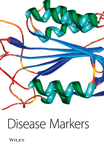Urinary Biomarkers for The Prediction of Reversibility in Acute-on-Chronic Renal Failure
Abstract
BACKGROUND: There is no reliable clinical test to predict the reversibility of acute-on-chronic renal failure. We study whether urinary biomarkers could be used as a noninvasive prognostic marker in patients with acute-on-chronic renal failure.
METHODS: We studied 39 adult patients with pre-existing chronic renal impairment presenting to us with acute-on-chronic renal failure. Urinary neutrophil gelatinase-associated lipocalin (NGAL) level was measured. The mRNA of kidney injury molecule-1 (KIM-1), interleukin-18 (IL-18), alpha-1-microglobulin (α1M), sodium/hydrogen exchanger-3 (NHE3), beta-2 microglobulin (β2M), and N-acetyl-β-D-glucosaminidase (NAG) in urinary sediment were quantified.
RESULTS: Urinary NGAL level significantly correlated with the serum creatinine at presentation (r = 0.762, p < 0.0001) but not baseline serum creatinine. Urinary sediment β2M expression significantly correlated with baseline glomerular filtration rate (GFR) (r = –0.400, p = 0.012). Urinary α1M and NHE3 expressions were significantly higher in ischemic acute tubular necrosis than other causes of acute kidney injury (p < 0.0001 and p = 0.006, respectively). Urinary α1M expression significantly correlated with the degree of improvement in renal function (r = 0.387, p = 0.026), as well as the estimated GFR 6 months later (r = 0.386, p = 0.027).
CONCLUSION: In patients with acute-on-chronic renal failure, urinary NGAL level correlates with the severity of renal failure, while urinary α1M expression correlates with the degree of renal function recovery. Quantification of urinary α1M mRNA may be developed as an non-invasive tool for risk stratification of this group of patients.




